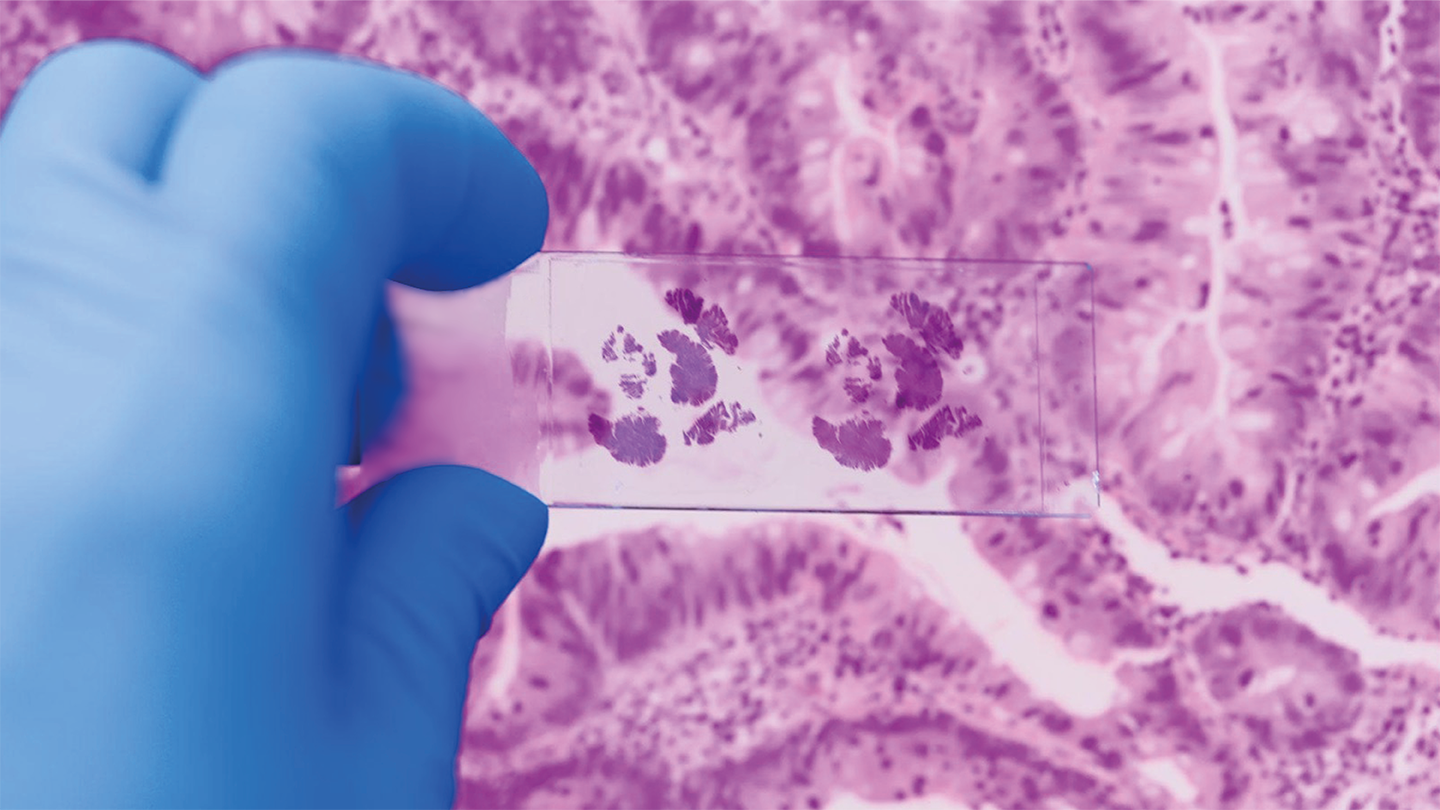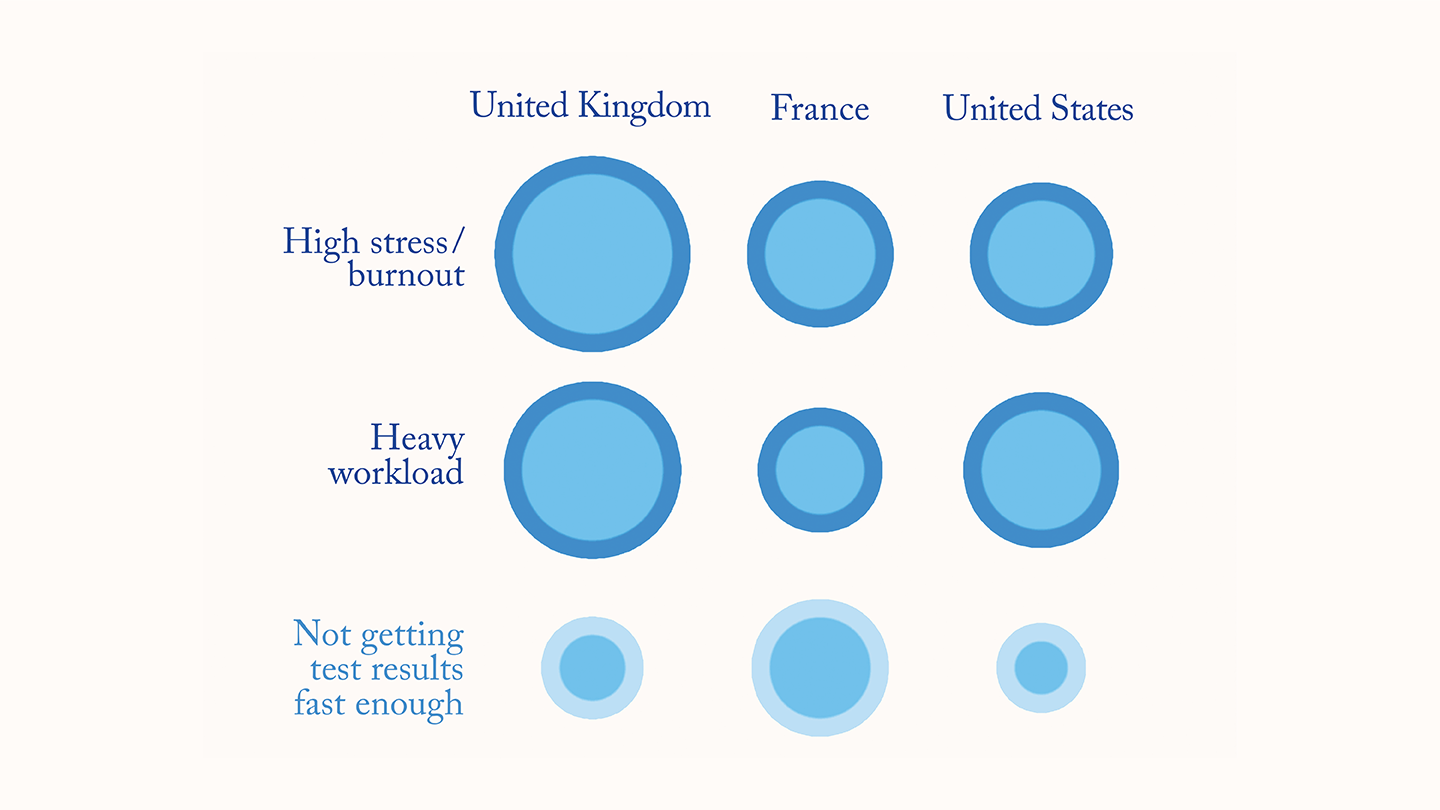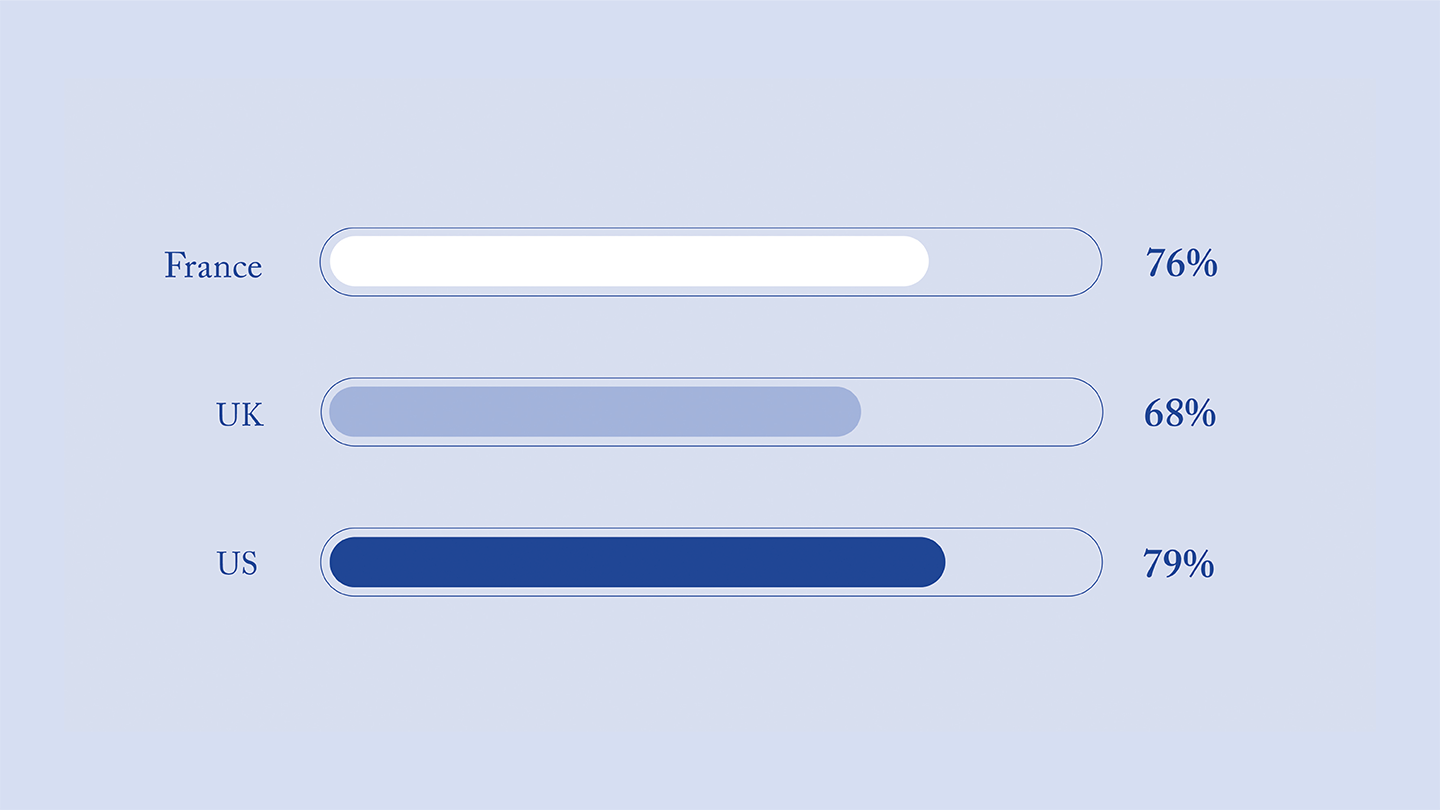
The Panelists
Catherine Guettier
Emeritus Professor of Pathology, Paris-Saclay University, France
Sheeba Irshad
Clinical Reader in Medical Oncology, Kings’ College London, United Kingdom
Anthony M. Magliocco
Founder & CEO of Protean BioDiagnostics, Protean BioDiagnostics, USA
Despite the potential for digital pathology and AI tools to relieve the burden on pathologists – particularly in the complex field of precision oncology – uptake of these technologies has been slower than anticipated (1).
To better understand barriers to adoption, AI biotech company Owkin commissioned the State of the Nation survey in July 2024 (2). A total of 120 pathologists and 192 oncologists – in France, the UK, and the USA – took part, sharing their opinions on workloads, budgets, AI support solutions, and the future of the lab.
To explore the meaning behind the data, Owkin invited representatives from the three regions to comment on the survey results in a webinar hosted by The Pathologist (3).
Here, we report on their observations.
Different regions show concern for different burdens

Burdens detrimental to patient care
When asked about the burdens they were currently experiencing at work, survey respondents in the UK reported the highest levels of burnout and heavy workload.
Sheeba Irshad attributes this to a disconnect between expectations and reality, saying, “Diagnostics and treatments are both becoming more sophisticated, but, in the UK, infrastructures are not yet in place to deal with this increased sophistication. Whilst technology is moving forward, our workflows just aren’t geared up for it yet – and that creates stress for healthcare professionals.”
In the US, the increasing complexity – but also volume – of work is undoubtedly contributing to burnout, comments Anthony Magliocco; “We have more complex forms to complete, synoptic reporting, more challenges with new therapeutics, and so on.”
Added to this, he says, “Trying to interface with the variety of electronic form document systems – particularly EMRs – can really take a lot of effort from medical staff.”
In Owkin’s survey, only 49 percent of respondents in France ranked their mental health as “good,” compared with more than 60 percent in the US and UK. This could suggest that, in France, the problem of burnout is worse or it impacts mental health more significantly.
Catherine Guettier attributes this situation to declining efficiencies in the French healthcare system, leading to increased delays in diagnosis and treatment. “French oncologists and pathologists are watching the gradual decline of the health care system and the deterioration of working conditions – particularly in hospitals, with no hope of rapid improvement,” she says.
Opportunities for digital pathology and AI to relieve these burdens
Owkin’s survey found that US and French pathologists are more optimistic about the impacts of digitizing pathology than UK pathologists. This pattern held for cutting waiting times for tests and treatment, democratizing access to tests, and relieving pressure on pathologists.
Sheeba Irshad thinks that optimism in the UK might be curbed due to the slow pace of technology upgrades in the National Health Service. Nevertheless, her institution has had positive experience with using AI to identify HER2 status in breast cancer. “The model identified 95 to 97 percent of all HER2-low and HER2- positive tumors in the validation cohorts,” she says. “But what was really exciting was that it outperformed the average agreement between senior pathologists.”
Anthony Magliocco spoke on the theme of using AI as a digital assistant to relieve workload pressures, saying, “Humans can get tired and miss details on slides. A diagnostic AI assistant can act like a pathology fellow that works with you day and night – and never tires. And if we exploit digital pathology to share cases with other experts and seek second opinions, errors will be a lot less likely.”
Though French survey respondents are currently using AI less than their UK and US counterparts, their enthusiasm for the potential of AI in the lab was on a par. Catherine Guettier shared that her department has recently implemented an AI tool for grading prostate biopsies and has already seen measurable time savings per slide as well as improved diagnostic accuracy.
Catherine Guettier also reported the successful integration of Owkin’s research tool for predicting breast cancer recurrence with her lab’s image management system, adding, “In my opinion, this type of seamless integration is the best way to work with AI in real life and to boost adoption of AI by pathologists.”
Are you optimistic that AI can cut waiting times for testing, oncologist review, and treatment?

Breaking down the barriers to entry
When asked about the main barriers to digitization of pathology, the survey respondents cited lack of operational resources, prohibitive costs, lack of funding, and risks around ethical issues and the accuracy of the solution.
Reflecting on the survey’s findings, Sheeba Irshad believes that the major barrier in the UK is the lack of adequate infrastructure. Once that is overcome, she says, “Training the healthcare professionals who will be deploying these tools is vital. Only with effective education of the workforce and patients will the tools fulfil their potential.”
The financial challenges are the primary bottleneck to digital implementation in France, says Catherine Guettier. Being able to demonstrate a return on investment will be key: “French pathologists must obtain reimbursement for the use of AI from the French Social Security, and this will be achieved only by the demonstration of a true improvement in the quality of care.”
Encouragingly, Catherine Guettier explains that data on AI performance in pathology is already being collected in prospective multicenter trials. What’s more, she continues, in France, “Some pathologists working in academic departments have begun to request the possibility of using in-house algorithms derived from their own translational research.”
Meanwhile, in the US, the lack of reimbursement for digital pathology and AI from the health insurers is still a major barrier to implementation. Despite this, Anthony Magliocco remains optimistic that the tide is turning. “Some companies are now receiving payments from CMS for digital services,” he says. “And once there’s a pathway to reimbursement, that changes everything. In the US, once there’s money to be made from technology investments, you’ll find the adoption will happen incredibly quickly.”
An appetite for research into AI capabilities is also driving interest in the US, explains Anthony Magliocco. “At Protean, we are very keen to evaluate and implement new algorithms in both the research and the clinical side,” he says. “I’m very optimistic about the future of these technologies.”
A virtuous circle
Our panelists’ experiences suggest a future where AI can catalyze digital pathology adoption via specific use cases that help alleviate the burdens placed on pathologists and oncologists by modern medicine, helping patients in the process. A collective thought appears to be that the barriers to entry could be overcome through the willingness of pathologists and healthcare systems, alongside the close collaboration of AI tool developers with end users. And it seems clear that a continued drive to prove – to both regulatory authorities and payer systems – the invaluable nature of digital pathology and AI solutions through the generation of clinical evidence will also lead to wider adoption.
References
- A Khanduja and C Tang, “Beyond Digital,” The Pathologist (2021). Available at: bit.ly/4gX0S3o
- Owkin, “State of the Nation: Opportunities and Challenges for Digital Pathology and AI Solutions,” (2024). Available at: https://www.owkin.com/connect/state-of-the-nation
- Webinar: “State of the Nation: Interrogating the Benefits and Obstacles to Digitization and AI Adoption,” The Pathologist (2024). Available at: https://bit.ly/4axW5Dr





